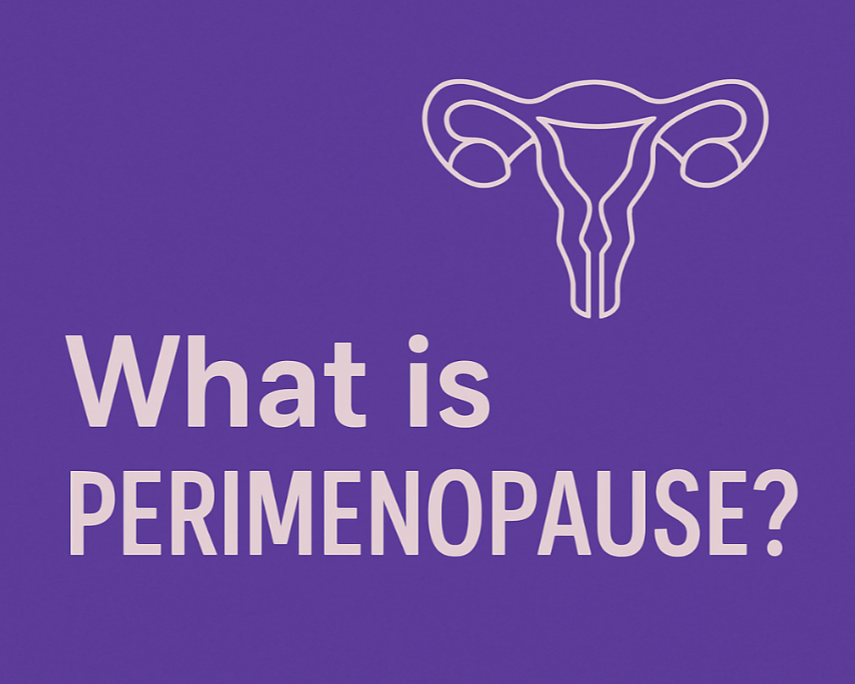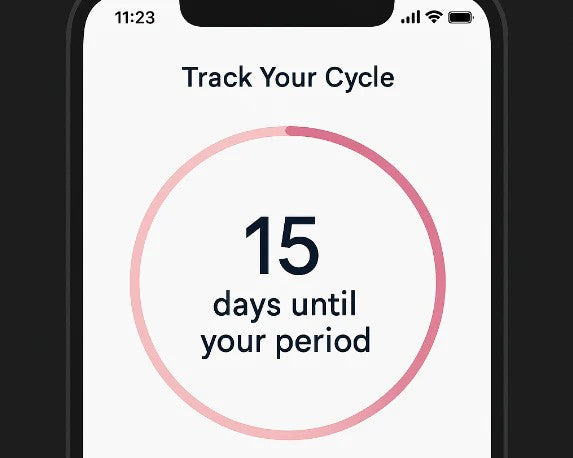As your body transitions through perimenopause, tracking your period isn’t just helpful - it’s empowering. This stage, which precedes menopause, often brings irregular cycles, unpredictable symptoms, and new questions about what’s “normal.” By simply monitoring your period and related changes, you can gain valuable insight into your health and give your OB/GYN the information they need to better support you.
What Is Perimenopause, and Why It Impacts Your Cycle
Perimenopause can begin as early as your late 30s or early 40s and may last 2 to 8 years, with most people experiencing changes over about 4 years. During this time, hormone fluctuations can lead to:
-
Shorter or longer menstrual cycles
-
Heavier or lighter flow
-
Missed periods or spotting
-
New or worsening symptoms such as hot flashes, mood swings, or insomnia
These changes make it hard to know what to expect, but by tracking your cycle, patterns begin to emerge.
The Benefits of Tracking Your Period
-
Understand What’s Normal for You
No two perimenopause journeys look the same. Tracking your periods gives you a personalized view of how your body is changing. This helps you identify what’s typical for you - whether that means longer gaps between periods, unusual spotting, or varying symptom intensity. -
Know When You’ve Reached Menopause
Menopause is officially defined as 12 consecutive months without a period. Without tracking, it can be difficult to recall when your last true period occurred, especially if your cycles have been irregular. A record removes the guesswork and helps you clearly recognize when you’ve reached that milestone. -
Spot Emerging Patterns
Over time, tracking can reveal trends that help you understand your body better. Are your periods coming every 45 days instead of 28? Are hot flashes more frequent right before your period? These patterns can indicate where you are in the transition and how your symptoms connect to hormonal fluctuations. -
Facilitate Better Conversations With Your OB/GYN
When you bring a record of your symptoms and cycle changes to your doctor, you make it easier for them to provide personalized care. You won’t need to rely on memory, and your OB/GYN can better assess:
-
Whether your cycle changes are typical or concerning
-
Which symptoms may benefit from treatment
-
Whether lifestyle, natural, or medical therapies could help
-
If it’s time to discuss hormonal or non-hormonal options
In fact, a 2023 study found that women who tracked their menstrual symptoms experienced fewer negative emotions and reduced physical symptoms compared to those who didn’t. Awareness leads to action.
How to Track Your Cycle: Choose What Works for You
You don’t need a fancy system—just consistency.
Use a Period-Tracking App:
-
Balance – A free menopause-specific app with symptom tracking tools.
-
Flo – A popular period tracker with customizable health insights.
-
Clue – A science-based period tracker that offers research-driven insights.
-
Calendar apps – Google Calendar or Apple Calendar can easily log dates and symptoms.
If you prefer privacy or simplicity, a notebook or planner works just as well.
Make It a Habit, and Use It to Your Advantage
Tracking your cycle doesn’t need to be time-consuming. A few quick notes each month can make a powerful difference. You’ll feel more in control, less uncertain, and better equipped to advocate for your health.
Bring your notes or app data to your next OB/GYN visit. The more you understand your body, the more precisely your doctor can support you as you navigate perimenopause and beyond.
Sources
Harper, M. S., et al. (2023). Symptom tracking and emotional regulation in perimenopausal women: A randomized controlled study. Journal of Women’s Health. https://pubmed.ncbi.nlm.nih.gov/37677503/
Santoro, N., & Randolph, J. F. (2011). Reproductive hormones and the menopause transition. Obstetrics & Gynecology Clinics of North America. https://pubmed.ncbi.nlm.nih.gov/21961711/
Mayo Clinic. (2024). Perimenopause: Symptoms and causes. https://www.mayoclinic.org/diseases-conditions/perimenopause
Read more

Self-care has somehow turned into just another task on our to-do list, a quick routine before bedtime, something we feel obligated to do. But genuine self-care isn’t a chore; it’s a retreat. For ma...

There’s a comforting rhythm to the changing seasons, each bringing its own light, scent, and atmosphere. For women in midlife, these transitions can also bring visible changes to the skin. What onc...



















